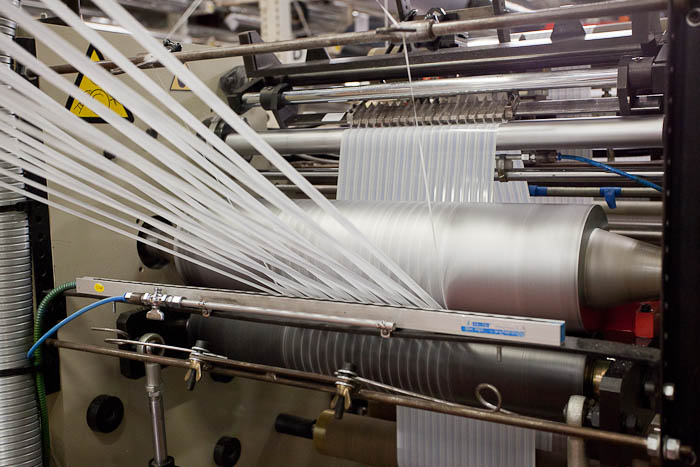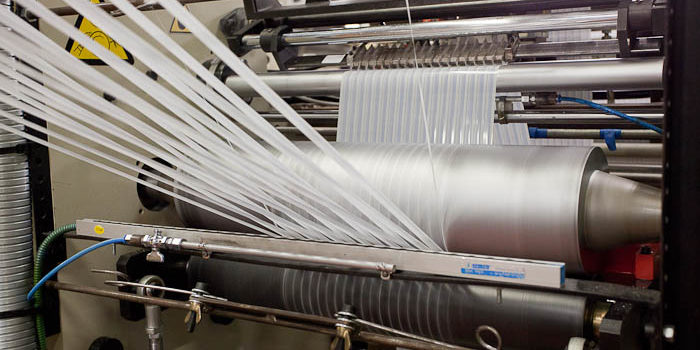When you want to slit plastic films into yarns, it is compulsory to go through intermediate steps. In fact, when you slit, you always go from the widest width to the narrowest. Thus, the transition from the film stage (ex: 1500mm) to the pancake stage (ex: 58mm) and finally to the yarn stage (ex: 3mm) is carried out.
It is important to note that it is not possible to slit without waste (i.e: a quantity of material lost on each side of the width, lower than the slitting width). In our example, for a film 1500mm wide, we will have 25 pancakes of 58mm and 25mm of waste on each side of the pancakes (25*58 2*25=1500). With the same logic for each pancake of 58mm, we will have 18 threads of 3mm and 2mm of waste on each side of the yarns (18*3 2*2=58). If we summarize for a 1500mm wide film we will get 450 yarns of 3mm.
There are several techniques of yarns slitting:
1. EMBEDDED HEAD
The principle is based on a knife axis embedded with a counter-knife axis, and the slitting system is done by shearing as with a scissor.
Advantages of this technology
– 10 micron cutting accuracy
– Longevity of the slitting head: several years
– Ideal for small widths: possibility of cutting from 0.20mm up to 2mm
Disadvantages of this technology
– Cost of knives and counter-knives
– Slitting head assembly time
2. RAZOR BLADE
The principle is based on a stacking system razor blade/spacer/razor blade/spacer/…
Advantages of this technology
– Flexibility: the width of the spacers depends on the desired slitting width
– Ideal for strong widths: can cut from 2mm up to 30mm
Disadvantages of this technology
– You cannot cur below 2mm
– Risk of cut when handling razor blades

As you can see from the above descriptions, the slitting system is chosen according to the width of the film to be slit.
Beyond 30 mm, we talk about pancakes, but it is another story that we will tell you later…
Valérie Robin, CEO

